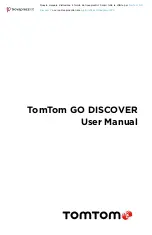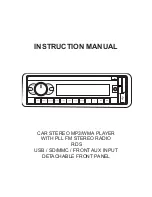
15
Battery waste disposal
THE BATTERY CONTAINED IN THE PRODUCT MUST BE RECYCLED OR DISPOSED OF
PROPERLY ACCORDING TO THE LOCAL LAWS AND REGULATIONS AND ALWAYS KEPT
SEPARATE FROM HOUSEHOLD WASTE. BY DOING THIS YOU WILL HELP CONSERVE THE
ENVIRONMENT.
WEEE – e-waste disposal
In the EU/EEA, this product is marked with the wheelie bin symbol on its body and/or packaging
as required by Directive 2012/19/EU (WEEE). This product shall not be treated as household
waste or be disposed of as unsorted municipal waste. You can dispose of this product by
returning it to the point of sale or bringing it to your local municipal collection point for
recycling. Outside of the EU/EEA, the wheelie bin symbol may not have the same meaning. More
information about national recycling options can be requested from a responsible local authority.
It is the responsibility of the end user to comply with local law when disposing of this product.
USA Specific Absorption Rate (SAR) Compliance
THIS WIRELESS DEVICE MODEL MEETS GOVERNMENT REQUIREMENTS FOR EXPOSURE TO
RADIO WAVES WHEN USED AS DIRECTED IN THIS SECTION
This GPS Navigation System is a radio transmitter and receiver. It is designed and manufactured
not to exceed the emission limits for exposure to radio frequency (RF) energy set by the Federal
Communications Commission (FCC) of the U.S. Government, Industry Canada of the Canadian
Government (IC).
The SAR limit recommended by the Federal Communications Commission (FCC) of the U.S.
Government, Industry Canada of the Canadian Government (IC) is 1.6W/kg averaged over 1
gram of tissue for the body (4.0 W/kg averaged over 10 grams of tissue for the extremities -
hands, wrists, ankles and feet). Tests for SAR are conducted using standard operating positions
specified by FCC/IC with the device transmitting at its highest certified power level in all tested
frequency bands.
FCC information for the user
THE DEVICE COMPLIES WITH PART 15 OF THE FCC RULES
Federal Communications Commission (FCC) Statement
This equipment radiates radio frequency energy and if not used properly - that is, in
strict accordance with the instructions in this manual - may cause interference to radio
communications and television reception.
Operation is subject to the following two conditions: (1) this device may not cause harmful
interference and (2) this device must accept any interference, including interference that may
cause undesired operation of the device.
This device has been tested and found to comply with the limits for a Class B digital device, pursuant
to part 15 of the FCC rules. These limits are designed to provide reasonable protection against
harmful interference in a residential installation. This equipment generates, uses and can radiate
radio frequency energy and, if not installed and used in accordance with the instructions, may cause
harmful interference to radio communications. However, there is no guarantee that interference
will not occur in a particular installation. If this equipment does cause harmful interference to radio
or television reception, which can be determined by turning the equipment off and on, the user is
encouraged to try to correct the interference by one or more of the following measures:
• Reorient or relocate the receiving antenna.
• Increase the separation between the equipment and receiver.





































